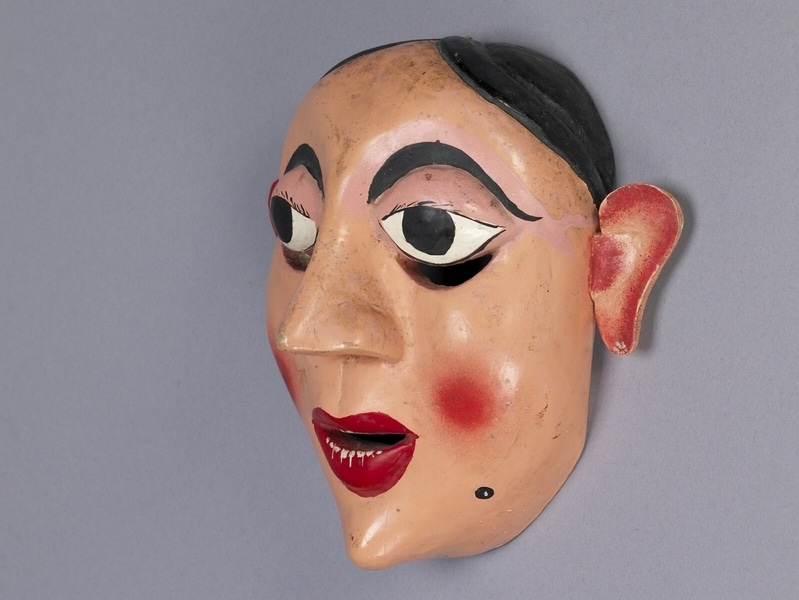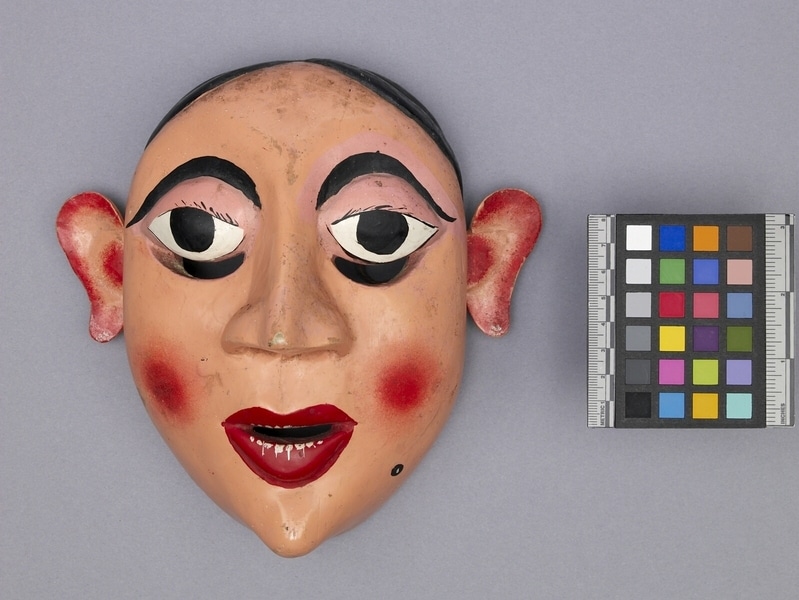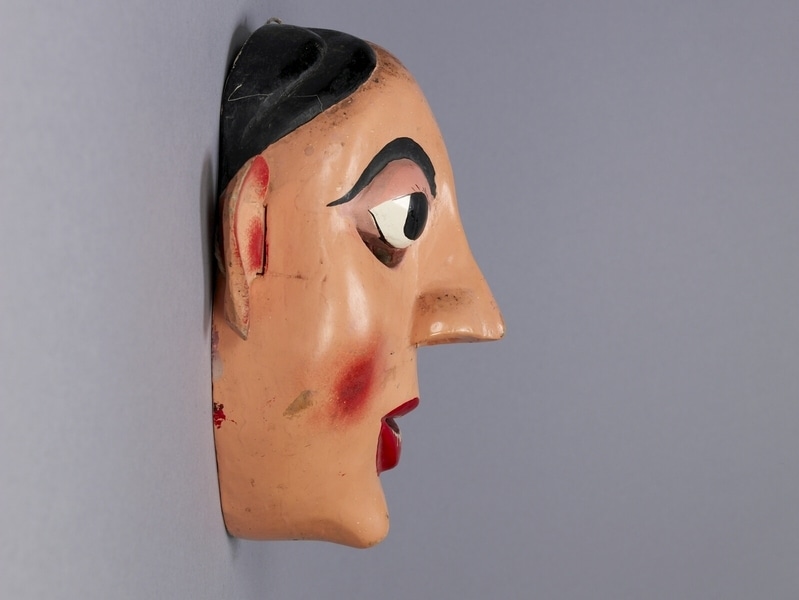Mask Item Number: Eh114 from the MOA: University of British Columbia




Description
Mask depicting a European woman with painted black hair and eyebrows, a pink face and ears with a pointed nose that has large flaring nostrils, a small pointed chin, as well as red lips, cheeks and raised areas of the ears. The hair is raised in low relief and is centre parted as well as pulled back to the sides. The large eyes bulge outwards and there are crescent-shaped holes under each. There is a black beauty spot on the left side of the face.
History Of Use
Sri Lanka has two major masked ritual dances: the Sanni, a healing and exorcising ritual, and the Kolam. Legends say the Kolam began as an amusement for a pregnant queen. The Kolam has four parts. A satirical prelude prepares for arrival of royal party; the king and queen arrive. The main play, a well known folk-tale, is performed. A dance of purification concludes the Kolam. In the prelude, masked male dancers represent village characters. European female mask is reported as being used over a face, with a European man's mask worn at same dancer's waist. In torch light this looks as if the woman is riding the man. Woman's mask is attractive but ridiculous.
Cultural Context
Folk-drama; entertainment.
Iconographic Meaning
Light colour is used to indicate haughty European
Item History
- Made in Ambalangoda, Sri Lanka ? before 1983
- Owned by Ebert's Gallery
- Owned by Jason Schoonover before June 21, 1984
- Received from Museum of Anthropology Shop Volunteers (Funding source) and Jason Schoonover (Seller) on June 21, 1984
What
Who
- Culture
- Sinhalese
- Previous Owner
- Ebert's Gallery and Jason Schoonover
- Received from
- Museum of Anthropology Shop Volunteers (Funding source) and Jason Schoonover (Seller)
Where
- Holding Institution
- MOA: University of British Columbia
- Made in
- Ambalangoda, Sri Lanka ?
When
- Creation Date
- before 1983
- Ownership Date
- before June 21, 1984
- Acquisition Date
- on June 21, 1984
Other
- Condition
- fair
- Current Location
- Case 106
- Accession Number
- 0972/0004